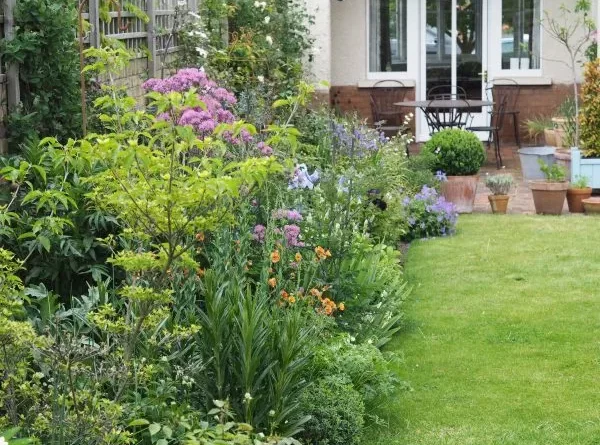Dog Safe Gardens
As Summer is here at last, we thought it good to focus on your outdoor space and keeping it safe for your dogs. Unfortunately, all kinds of hidden dangers can occur in a garden not least the risk of escape. Keeping your boundary secure is vital for doggy safety. When a new dog arrives, or you are staying away or moving home, inspect and secure your boundaries to make sure your dog doesn’t turn into Houdini!
When checking boundaries, be aware that some dogs will dig their way out. Remember to keep all gates, sheds and compost bins shut to prevent dangers. Snacking from the compost heap can cause illness – the moulds in decaying compost can produce vomiting, twitching, tremors and worse.
For new gardens or changes to your garden, ‘think dog’. For example, you can lay paths to help prevent dogs from running through your flower beds. Low hedges can be used to create designated ‘doggy areas’. Using clever design you may be able to keep your dog away from certain areas of the garden helping to keep them safe and your garden tidy.
Toxic Flowers
Some bulbs (tulips, daffodils, hyacinths and crocuses) are toxic to dogs as are ferns, hydrangeas, rhododendrons and foxgloves. When you store your bulbs, keep them well away from areas your dog has access to.
Some wild plants such as buttercups, bluebells and ivy can make your dog ill too. Symptoms you could see from plant poisoning include salivation, tummy pain, vomiting, diarrhoea and even trembling and coma. We recommend you research your plants in advance and check how safe they are for pets as there is an endless list of poisonous plants. Also, be especially conscious should your dog decide to dig up or eat your garden plants or those on walks come to that. It is best to keep an eye on your dog when he is out and avoid letting him chew on anything.
Garden Products
If there are dogs about, be aware of chemicals such as fertilizers and pesticides making sure you use the pet friendly varieties. Follow the instructions and guidelines to the letter on all garden products and be conscious of safety at all times.
After laying down manure or fish blood and bone watch your dog closely. Some dogs love the smell of soil improving products and will dig it up and decide to eat it. Definitely avoid using cocoa bean mulch which is toxic to dogs. Cocoa mulch can be particularly appealing to dogs due to its ‘chocolate’ smell, but it contains theobromine.
Slug Bait
We cannot tell you enough how deadly metaldehyde-containing slug/snail bait is for dogs. Simply do NOT use it if you have dogs or dogs are visiting your garden. Even a small amount of this product can be fatal for a dog and they are particularly attracted to it. Snail and slug baits come in the form of pellets, granules, liquids or powders and can actually resemble dry dog food. Symptoms of slug bait poisoning include vomiting, tremors and seizures. You must seek veterinary advice straight away if you suspect he has eaten slug or snail poison.
What to do
If you suspect your dog has consumed any toxic substance, you must remove the items straight away (if safe to do so), contact your vet and let them know how much they have consumed and what symptoms your dog is showing. If you visit the vet’s surgery, take the packaging of the product with you for reference.
We hope we have focussed your mind on garden safety and wish you a lovely time outside with your dog this summer.

